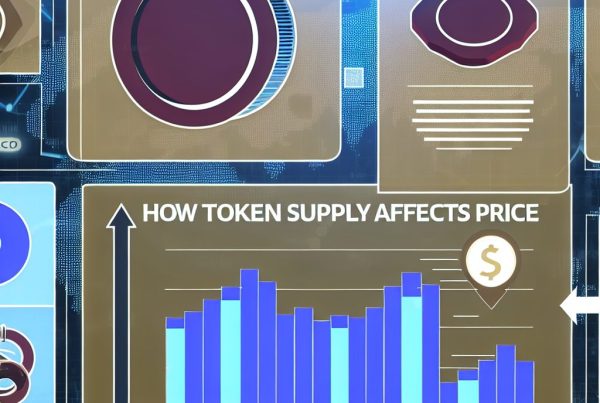Understanding the Difference Between TVL and MC in Cryptocurrency
The cryptocurrency landscape is filled with various metrics that help investors and enthusiasts gauge the health and potential of different projects. Among these metrics, Total Value Locked (TVL) and Market Capitalization (MC) stand out as two of the most significant indicators. While both are essential for evaluating a cryptocurrency’s performance, they serve different purposes and provide unique insights. This article delves into the nuances of TVL and MC, helping you understand their differences, significance, and implications in the crypto market.
What is Total Value Locked (TVL)?
Total Value Locked (TVL) refers to the total amount of assets that are currently staked or locked in a decentralized finance (DeFi) protocol. It is a crucial metric for assessing the health and popularity of DeFi projects. TVL is typically expressed in terms of the underlying cryptocurrency or in fiat currency equivalents.
TVL is calculated by summing up the value of all assets locked in a specific protocol. This includes various forms of assets such as cryptocurrencies, tokens, and liquidity pools. The higher the TVL, the more trust and usage a protocol has, indicating that users are willing to lock their assets for potential returns.
How is TVL Calculated?
Calculating TVL involves a straightforward process:
- Identify all the assets locked in the protocol.
- Determine the current market price of each asset.
- Multiply the amount of each asset by its market price.
- Sum the total values to arrive at the TVL.
For example, if a DeFi protocol has 1,000 ETH locked at a price of $2,000 per ETH and 500,000 USDC locked, the TVL would be:
- 1,000 ETH $2,000 = $2,000,000
- 500,000 USDC = $500,000
- Total TVL = $2,000,000 + $500,000 = $2,500,000
Why is TVL Important?
TVL serves as a vital indicator for several reasons:

- Liquidity Assessment: A higher TVL indicates greater liquidity, which is essential for trading and investment.
- Protocol Trust: A growing TVL often reflects user trust and confidence in the protocol.
- Market Trends: TVL can help identify trends in the DeFi space, indicating which protocols are gaining or losing traction.
What is Market Capitalization (MC)?
Market Capitalization (MC) is a measure of a cryptocurrency’s total market value. It is calculated by multiplying the current price of a cryptocurrency by its total circulating supply. MC is a widely used metric to assess the size and value of a cryptocurrency in the market.
How is Market Capitalization Calculated?
The formula for calculating market capitalization is:
- Market Cap = Current Price x Circulating Supply
For instance, if a cryptocurrency has a current price of $50 and a circulating supply of 1 million coins, the market capitalization would be:
- Market Cap = $50 x 1,000,000 = $50,000,000
Why is Market Capitalization Important?
Market capitalization is significant for several reasons:
- Investment Decisions: Investors often use MC to determine the relative size of a cryptocurrency compared to others.
- Market Sentiment: A rising MC can indicate growing investor confidence, while a declining MC may suggest the opposite.
- Risk Assessment: Generally, larger market cap cryptocurrencies are considered less risky than smaller ones.
Key Differences Between TVL and MC
While both TVL and MC are essential metrics in the cryptocurrency space, they differ significantly in their focus and implications:
- Focus: TVL focuses on the total value locked in DeFi protocols, while MC measures the total market value of a cryptocurrency.
- Usage: TVL is primarily used in the context of DeFi projects, whereas MC is applicable to all cryptocurrencies.
- Implications: A high TVL indicates strong user engagement and trust in a DeFi protocol, while a high MC suggests a cryptocurrency’s overall market strength.
Real-World Applications of TVL and MC
Understanding the practical applications of TVL and MC can provide deeper insights into their significance in the cryptocurrency market.
Case Study: Uniswap
Uniswap, a leading decentralized exchange (DEX), has consistently maintained a high TVL, often exceeding billions of dollars. This high TVL indicates strong user trust and engagement, making it a go-to platform for trading various tokens. As of 2025, Uniswap’s TVL has been a critical factor in its ability to attract liquidity providers and traders alike.
Case Study: Bitcoin
Bitcoin, the first and most well-known cryptocurrency, has a market capitalization that often exceeds hundreds of billions of dollars. Its high MC reflects its status as a digital gold and a store of value. Investors often look at Bitcoin’s MC to gauge its dominance in the cryptocurrency market.
How TVL and MC Affect Investment Strategies
Investors often use TVL and MC to inform their investment strategies. Here’s how:
- DeFi Investments: Investors looking to enter the DeFi space may prioritize projects with high TVL, as this indicates a robust ecosystem and user trust.
- Long-term Holdings: For long-term investors, a cryptocurrency with a high market cap may be more appealing due to its perceived stability and lower risk.
- Diversification: Investors may use both metrics to diversify their portfolios, balancing between high TVL DeFi projects and established cryptocurrencies with high MC.
Challenges and Limitations of TVL and MC
While TVL and MC are valuable metrics, they come with their own set of challenges and limitations:
Limitations of TVL
- Market Volatility: TVL can fluctuate significantly with market conditions, making it a less reliable long-term indicator.
- Protocol Manipulation: Some projects may artificially inflate their TVL through incentives or rewards, leading to misleading figures.
Limitations of Market Capitalization
- Circulating Supply Variability: Changes in circulating supply can affect MC, making it less stable over time.
- Price Manipulation: Market prices can be influenced by trading volume and market sentiment, leading to potential inaccuracies in MC.
Frequently Asked Questions (FAQs)
What is a good TVL for a DeFi project?
A good TVL varies by project and market conditions. Generally, a higher TVL indicates greater trust and liquidity, but it’s essential to consider other factors such as user engagement and protocol utility.
Can a cryptocurrency have a high MC but low TVL?
Yes, it is possible. A cryptocurrency can have a high market cap due to its overall market value while having low TVL if it is not actively used in DeFi applications.
How often should I check TVL and MC?
Regularly monitoring both metrics can provide valuable insights into market trends and project performance. However, it’s essential to consider them alongside other indicators for a comprehensive analysis.
Conclusion
In summary, understanding the difference between Total Value Locked (TVL) and Market Capitalization (MC) is crucial for anyone involved in the cryptocurrency space. While TVL provides insights into the health and popularity of DeFi protocols, MC offers a broader view of a cryptocurrency’s market value. Both metrics serve unique purposes and can significantly influence investment strategies.
As the cryptocurrency market continues to evolve, staying informed about these metrics will empower investors to make better decisions. For the latest updates on cryptocurrency news and price tracking, consider visiting Bitrabo. Follow me on social media for more insights: X, Instagram, Threads.
Disclaimer: This article is for informational purposes only and should not be considered financial advice. Always conduct your own research before making investment decisions.
The Crypto Watchlist of the Week 🔎
Subscribe to receive expert-curated projects with real potential—plus trends, risks, and insights that matter. Get handpicked crypto projects, deep analysis & market updates delivered to you.


